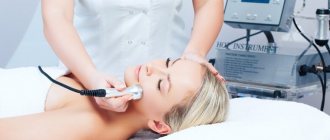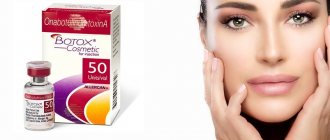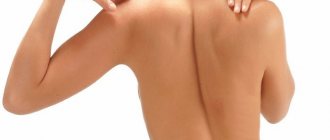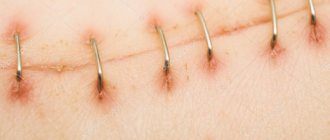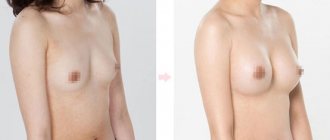- home
- →
- Body modifications
- →
- Scarring
Scarification (scarification) is the application of artistic scars and scars to the body. It can be done either simply as a deep cut, or using the technique of cutting out a flap of skin, creating a picture or tribal. On my website you can see photographs of scars on the body and photographs of scars on the face, and in the “Articles” section you can find useful information on care and healing after the procedure. Scarring in St. Petersburg is done in professional studios by master modifiers. When choosing a specialist, you must remember that this is not done for one day and the consequences may be irreversible.
How to make Halloween scars - step by step instructions
- Using a pink pencil, as close as possible to the natural skin tone, draw a sketch of the scar. We clearly display its bends and reliefs.
- Let's paint over our drawing.
- Apply collodion (glue) to the skin inside the design. Give the glue a few minutes to dry.
- By tightening the skin with glue, the man-made scar acquired a natural relief.
- Apply the corrector evenly over the entire scar area.
- We even out the color with a foundation and carefully shade the borders with a sponge (small foam sponge).
- Using a brush, apply dark pink shadow to the scar. It is necessary to treat the internal areas; it is permissible to highlight the skin on the outside with a different color.
The terrifying detail of your unique makeup is ready. Removing this type of makeup is very simple: false scars will easily come off; the first time you try to get rid of them, you just need to pull the ends of the wound. Red marks or slight swelling on the freed skin will disappear without a trace within 10-15 minutes. You can complement your Halloween scars with pale lips, dark circles under your eyes, or swollen eyelids (as if after a long and desperate cry).
Pale, bloodless lips can be easily created using a pale lipstick and regular concealer. Apply a thin layer of lipstick, apply corrector on top, and distribute it evenly over the surface of the lips. To create the effect of tear-stained eyes, we will do the following simple manipulations: on the upper eyelid (just above the eyelash line), draw a thin line with a black pencil.
We lower the arrow down, thickening the line closer to the edge of the eyelid. Now, using a red lip corrector, we draw tear lines along the eyelashes of the upper and lower eyelids. To complete the picture, it remains to acquire bruises under the eyes. Take a dark gray shade of eyeshadow with a brush and apply it under the lower eyelid. The movements of the brush should be extremely careful, its pad should barely touch the skin.
The color should be a little more intense at the edges of the lower eyelid. Using a foundation two shades darker than your natural color, draw two thin lines from the eye sockets to the cheekbones. Lightly blend the foundation with a brush. Wearing such makeup is recommended for black brides, newly-made zombies or suffering vampires.
At home, you can create a chic look based on unique scars. Creating such an image requires a minimum of time, and the result is truly real.
Imitation: how to make scars?
Remove scars with injections
The injection method is used in cosmetology to treat atrophic scars. After examination by a doctor, the patient will be recommended one of the following methods:
- Mesotherapy - special “cocktails” are injected under the dense scar tissue with a needle, stimulating collagen production and lifting the surface.
- Biorevitalization - used in conjunction with laser resurfacing, includes injections with hyaluronic acid.
- Contour plastic surgery is performed by injections of gel fillers with hyaluronic acid. Filling of the sagging area of the scar lasts 6–12 months, then the procedure must be repeated. They use Restylane, Juvederm, Collost.
The process itself
So, how to make a scar at home? What stages are recommended to be successfully completed to achieve the best results?
1. At the first stage, you need to degrease the selected area on the body. To do this, it is advisable to use a cotton swab with alcohol.
2. Plasticine will be needed to form a narrow sausage. Using a nail stick, it is advisable to combine the plasticine base with the skin. It is possible to smear the plasticine, but in the central part it is advisable to leave a small bump, characterized by volume. Hand cream is traditionally used to smooth out bulges in plasticine.
3. To blur the boundaries of the skin and an artificial scar, it is necessary to process the edges of PVA plasticine, which must dry successfully to create a high-quality image.
4. The next stage is treating the treasured place on the body with powder.
5. The scar can be covered with makeup or decorative cosmetics. The color can be any, as it all depends on your imagination. The ideal option is a pinkish-red color, which is natural.
It’s unlikely that you’ll be able to create an original Halloween look with just one costume. The specifics of the holiday require complete immersion into the terrifying character of the character, and here you can’t do without specific makeup. Today we will tell you how to make scars for Halloween - one of the most popular and spectacular elements of the appearance of many monsters and traditional Halloween heroes.
How to quickly and inexpensively remove scars
It will not be possible to completely remove a scar quickly. Radical surgery will require a recovery period of up to two months. For the same reason, dermabrasion and the use of ointments and creams are not suitable (the effect is noticeable after 3–6 months). We can only hope for minimal interventions to smooth the skin surface and eliminate pigmentation. Procedures that suit your price can be selected from the table.
| Name | Onset of effect | Cost in Moscow clinics (RUB) |
| peeling (superficial or deep) | immediately after the procedure | 1500–3500 |
| microdermaforms | immediately after the procedure | 3000–5000 |
| injection of fillers with hyaluronic acid | immediately after the procedure | depending on consumption and filler manufacturer 7000–15000 |
You should not fall for the promise of “quickly getting rid of scars” using unfamiliar methods. Deception leads not only to loss of money, but also sharply worsens the condition of the skin from the action of mysterious ointments.
Artificial scars at home - step-by-step instructions
There are quite a few ways to create an artificial scar on the face. But most non-professional artists prefer more affordable products to real makeup. For example, ordinary decorative cosmetics, without which no modern girl’s makeup can do.
Main stages:
- Even out your complexion using a light-colored foundation. It is better to take tones of an unnatural gray-beige color, which will give the whole image a sickly look.
- Using light strokes, apply gray shadows to the site of the future scar and blend well. This technique will help create volume to our scar.
- Using a dark red lip pencil, we draw the contours of the future scar. How it will look on your face depends entirely on your imagination. Let us only note that torn scars look much more realistic and frightening.
- Fill in the finished contours with the same lip pencil.
- On top of the sketch, apply several layers of medical glue or collodion, which can be purchased at the pharmacy.
On a note! Instead of medical glue, you can use regular PVA. But keep in mind that it is more difficult to work with, and the effect may be short-lived. - Let the liquid dry for 5 minutes and apply transparent powder on top.
- Let's add volume to the scar using liquid face corrector.
- Using a thin brush and matte pink lipstick, carefully add color to the scar.
Types of scars and scars on the face
According to the condition of the scar tissue, scars are divided into:
- for normotrophic ones - they look like spots, located at the level of neighboring areas, especially noticeable in the cold, when blood flow decreases;
- atrophic - formed due to a lack of collagen, thinned, forming depressions, usually found after large acne;
- hypertrophic - typical for people with thick skin, hyperkeratosis, excess collagen production, protrude above the surface, the face looks lumpy;
- keloids - are localized in places of tension, consist of a special type of connective tissue, similar to hypertrophic ones, but the edges are red, cause itching, and are capable of growing.
Some authors consider the cause of keloid scars to be genetic mutations due to unfavorable heredity.
Scars vary depending on the deformation:
- chipped - have a V-shaped cross-section and differ in depth;
- rectangular - with a shallow bottom, they can cover a significant area;
- rounded - smoothly transition into healthy tissue.
Scar after surgery
If surgical intervention on the face is necessary, the doctor tries not to make an incision in the area of the facial muscles that cause stretching of the skin. Good healing forms a normotrophic scar. If the edges were subjected to tension, the wound festered, then excessive growth of connective tissue appears. The blood supply to the operating area is important. Concomitant diseases contribute to the formation of atrophy. Scars on the face in the form of “pits” remain in place of removed warts and moles.
Acne scars
More often they belong to the atrophic type. When squeezed out, the contents do not come out completely, the inflammation is diffuse. Localized on the cheeks, forehead, chin (in places where the fat glands are disrupted). As you age, collagen decreases, causing scars to become more noticeable.
Scar after herpes
Herpes viruses are localized on the lips, wings of the nose, and eyelids. They cause pain, itching, and then blistering rashes. After opening, a crust remains with a small pink spot underneath. A scar is formed due to the addition of suppuration if you try to remove the crust yourself.
How to make a fake scar on your hands for Halloween
Another popular place to apply makeup to look like cut wounds and scars is on the hands. True, to create a frightening cut on your hand, you can’t do with just “decorative” and you need to use real makeup.
Necessary materials:
- makeup or palette of shadows and blush
- powder
- sculpture plasticine
- alcohol and cotton wool
- black eyeliner
- PVA glue
- nail file and brush
- hand cream
- red nail polish
Main stages:
- We degrease the place on the hand chosen for the scar with cotton wool and alcohol.
- Using a black pencil, draw the outline of the future scar.
- Roll a thin sausage out of plasticine and distribute it along the drawn contour. Using a nail file, make a deep cut with jagged edges. We remove uneven transitions with hand cream.
- We will treat the edges of the scar with PVA glue. This will smooth out the transition between leather and plasticine.
- Let the glue dry and powder the entire scar.
- Using shadows or makeup, paint the scar in dark red tones.
- The final touch is blood. Its role will be played by red nail polish, which needs to be poured deep into the wound.
There is an opinion that scars adorn a real man. Perhaps not all men will agree with this. But perhaps everyone will agree that scars do not decorate women. What to do? How to remove scars so that they do not cause inconvenience?
Scars can appear for various reasons. These could be scars left after acne heals, or after surgery. Or maybe as a result of injury or injury. Whatever the reasons, it is possible to remove scars from the face or body. Here are some basic tips.
- If a scar appears after a wound or surgery, then the first actions should be taken immediately. After removing the stitches, you need to start using creams to absorb scar tissue as soon as possible. One of the most effective at the moment is Contractubex cream. In many cases, the use of this remedy alone is sufficient.
- If after applying a course of cream, traces of the scar are still visible, then you can use the peeling procedure. During a chemical peel, special reagents are applied to the skin, resulting in the removal of the top layer of skin. Thanks to this method, you can remove scars on the arm or other part of the body.
- If the scar forms a dent or pit on the surface of the skin, special dermal fillers can be used to remove it. Cosmetologists usually use collagen or a special hyaluronic acid gel. As a result, the skin is evened out. But this procedure will need to be repeated every few months.
- If you want to get rid of unpleasant memories of a scar forever, you can use laser therapy. This method helps to smooth out the scar from the surface of the skin, leaving almost no marks. To remove a scar with a laser, local anesthesia is often used. Treatments may vary depending on the laser. There are some that remove the top layers of skin, giving it a more natural look. And subsequently the scars disappear. Other lasers penetrate the lower layers of the skin and stimulate collagen production. This way, you can get rid of scars from the inside.
- If the scar is very large or there are many of them, then you can resort to a surgical method to remove them. There are several such methods. For example, you can cut out the scar and apply intradermal sutures. You can also do plastic surgery to change the contours of the scar. Or cut out the scar for the purpose of subsequent skin transplantation. There is a surgical method called expander dermotension. It consists of sewing a silicone bag (expander) into the area next to the scar, and a physiological solution is injected into it. As a result, the code above the scar stretches. After this, the pouch is removed, the scar is excised, and the skin is tightened.
What is scarring: basic concepts
(watch 10 minutes)
Scarification, scarification, scarring is a surgical intervention in the human skin with the purpose of applying a certain pattern. As a rule, this technique is used either by people who already have scars and want to hide them, or by fans of extreme body modification.
Like any body modification technique, scarification has its own history. It is quite old and refers to slightly frightening methods. Today it has become one of the avant-garde art movements.
The process of scarring is quite a painful procedure. That is why it is done under local anesthesia - the area of the body is numbed with the help of medications. Where there will be a drawing in the future, a medicine is injected in a circle, which leads to numbness of the skin.
Note.
Those who tolerate the pain more easily can use the cream; others require injections.
How to remove scars at home?
But is it really possible to remove scars only with the help of specialists in special clinics? No. You can remove scars at home using the following tips.
- lemon juice
. It contains natural whitening agents that will make the scar less noticeable;
aloe juice For minor household cuts or to prevent acne scars, apply aloe to a fresh wound. The juice of this plant has restorative properties and will heal the wound without scarring;- honey
_ This is a natural remedy and a universal mask for scars. Honey can be applied to the rumen several times a day; - homemade mask
. If you mix a tablespoon of fine oatmeal with one tablespoon of cream and add a couple of drops of lemon juice, you will get an excellent mask for scars. It should be applied to the skin for 15 minutes and then washed off with warm water.
Each organism has its own characteristics, and different wounds cause different scars, but now you know for sure that it is possible to get rid of scars. And, if someone asks you: is it possible to remove a scar on your face so that there are no marks left, you can confidently say: “Yes!”
Types of scarring and application technologies
In the Middle Ages, when constant wars were fought for their possessions, having scars, especially on the face, was considered very honorable. This was a sign of courage and courage, as a rule, men received them by defending their territory or the honor of ladies.
In the modern world, the need for constant struggle in its physical aspect has disappeared, but many of our contemporaries want to have a noble scar. Throughout life, a person tries to emphasize his individuality. Drawing scars on one's own body, as an element of self-expression, has taken root well in our times. In any case, whatever the reasons, if a person decides to decorate his body with scars, then he has his own good reasons for doing so.
Important! When deciding on scarring, you must remember that the scar remains on the body for life. In addition, not only the process of scarring is painful, but also the healing process after scarification.
There are two types of scarring: burn and cutting, that is, a cut. The final result of scarification will depend not only on the type, but also on how to make the scar.
Burning or branding
For many simple graphic designs, the burn technique is used, this provides sufficient scope for the realization of the master’s plan. Branding is done using various means:
- hot metal;
- laser;
- liquid nitrogen;
- acids.
Body modification artists are often asked the following questions:
- How is hot metal branding carried out? Before application, a special steel mold is made in the form of the desired pattern, heated and applied to the skin for 8-10 seconds. This burns at least two layers of skin, resulting in a concave scar.
- How is laser burning done? The drawing is applied using a laser, and a cut scar can be made using the same method.
- How is burning with liquid nitrogen different? The principle is the same as with hot metal, only instead of heating the mold, on the contrary, it is cooled to a very low temperature, immersed in liquid nitrogen, and then applied to the skin.
- How does chemical burning occur? Along the contour of the pattern, a chemical composition is applied to the skin, usually an acid or alkali.
The latter method is less popular because its end result is not so predictable.
Scarification: Body modification is not for the faint of heart
Nowadays you won’t surprise anyone with tattoos, piercings, and body painting.
Did you know that for body modifications, special scars are also applied to the body, which, when healing, represent some kind of design or pattern. This type of extreme enhancement of one's appearance is called scarification.
or
scarification
.
Story
scarification has its roots in the deep past. They say that it originated in African tribes, where they signified their rank or social status in a similar way, and applied patterns in the form of scars during rituals, for example, the initiation of a man into war.
Techniques and methods
In modern realities, there are several scarification techniques.
Performed with a scalpel, it is called cutting.
- The right angle of immersion of the scalpel into the skin and relatively shallow penetration, after healing, gives an imperceptible, light pattern.
- Immersion of the scalpel at an angle, after restoration, forms a three-dimensional pattern (they say that you can even add special substances to the wound to enhance the volume).
- And there is a more extreme method, when the top layer of skin is cut off, and as a result you get, as it were, notches on the body.
Also, these varieties can be combined to create an original pattern.
And there is also scarring, which is done according to the principle of branding or embossing - with a special metal matrix heated to a certain temperature. This method is called branding
.
Safety and Consequences
It is clear that for reasons of safety and health, it is worth entrusting such a procedure to a professional who guarantees the hygiene and cleanliness of the procedure. After all, this is essentially a mini-surgical operation. And it's quite painful. Therefore, local anesthesia is also recommended.
It is also clear that such a procedure can cause sad consequences. For example, an allergy to anesthesia. If you choose the wrong place for scarring, you can hit vital capillaries and lose a significant amount of blood. There are places where making scars is strictly prohibited, so you should be especially careful when choosing where to apply the pattern.
Painful shock, inflammation, infection, sepsis - all this may well happen with scarring if the outcome is unfavorable. Scarring may also not occur as planned, and the drawing will not turn out the way it was intended. A recovery period is also required, during which it is necessary to follow the rules of care for the damaged skin surface. And in general, the final result will be visible after a few years.
But, given the very considerable price for scarring services, and the difficulties associated with its implementation, not everyone goes to a tattoo parlor. Of course, it is absolutely unacceptable to do something like this at home, on your own or with unverified craftsmen, without finding out the details of the procedure, what kind of tool you used, or what “happened to be at hand.” The risks are too great.
Why do they even do this?
I read an article about why teenagers do this (although it was an article about spontaneous cutting, not for aesthetic reasons), but I think the motives for intentionally hurting themselves would be similar:
- an attempt to get rid of mental pain or drown it out through the suffering of the body. Excessive internal tension is relieved;
- capturing difficult, negative experiences (for example, loss of loved ones);
- transferring internal aggression to oneself, and not to the outside world, not to others;
- revenge on oneself for not being “good enough”, a way to combat adult authoritarianism;
- a way of exploring and “taming” one’s body as it goes through puberty;
- a way to make sure that since your body obeys you and you can do whatever you want with it, you have power, you have a way to influence and manage your life, and this is calming;
- drawing attention to your person;
- this is accepted in the sub-culture or environment to which a person wants to belong;
- maintaining occult rituals.
Personally, I am of the opinion that the body is the temple of the soul, and it should be treated with respect. Or maybe I'm just a coward who will never dare to do such an experiment.
But I can’t help but admit that such a body modification looks extraordinary. In any case, it attracts attention and can be aesthetically interesting. But I immediately begin to think at what “price” such a pattern was obtained, and I feel uneasy.
But it is clear that each person has his own motives and complete freedom of choice, which we have no right to condemn.
If you found this article interesting, please like it!
(fortunately, I found out). I will also be glad to see you as a subscriber to this channel , where they explore beauty in all its forms.
source
Scarification technique, how scars are made
Since scarification came into fashion, many people began to think about how to make a scar. Scarification or scarification is a trend in bodyification, which began with the ancient tribes of South Africa. At that time, scars were not a means of decoration, but rather a way of informing another person. With the help of the scar, it was possible to determine which class the bearer belongs to and what his social position is in the tribe. What do scars mean now, and how are they applied to the skin?
How to remove a scar on the face, the most effective ways
Depending on the type of scar, different treatment methods are used. Sometimes complex therapy is necessary, with the simultaneous use of several procedures. But how to remove a scar on the face and body as effectively as possible?
Laser resurfacing
Before starting laser removal of scars on the face, you should prepare for the fact that it will not be possible to do it completely. But it will noticeably (by about 90%) brighten and smooth out. The reason lies in the replacement of normal tissue with fibrous tissue during the healing process of the wound. Depending on the type of scar, choose one of two types of resurfacing:
- classical;
- factional.
The first type of laser scar correction evaporates moisture from fibrous tissue without affecting the healthy layer of skin. In their place, dried cells remain, which can then be easily removed. The main advantage of laser facial resurfacing is considered to be high precision and stimulation of the skin to regenerate.
The second type is based on starting the skin renewal process. Or rather, stimulation of collagen and elastin production. As a result of fractional laser resurfacing of scars, the skin increases elasticity and is more similar in appearance to nearby tissues. But the method has contraindications:
- pregnancy;
- diabetes;
- skin and blood diseases;
- Tan;
- oncology.
The effect on the face of the laser is noticeable after the first procedure. But to get the best result, it is recommended to undergo 6 to 10 procedures with an interval of 30-60 days.
ethnoscience
Traditional methods of scar correction are always popular and quite effective. Let's describe just a few of them:
- An oil cocktail of essential oils of mint, neroli, rosemary in equal quantities. Gently wipe problem areas with the mixture every evening.
- A mixture of melon seeds and eggshells. Add vegetable oil to the powder until a thick paste forms. You need to smear the scar for 2 months.
- Pea flour diluted in milk (proportions 1:1). The resulting paste is applied for 60 minutes. It must be applied until the scar disappears.
- Chopped pulp of 3-4 cabbage leaves is poured with honey. The resulting mass is applied for two hours. You need to make 2-3 compresses per day.
- Dry herb tinctures. 20 grams of a mixture of dry herbs, consisting of chamomile, marigold, nettle, whitecap and kidney grass, dried marsh flowers and St. John's wort, are poured into 200 ml of hot water and heated in a water bath for about two hours. Next, moisten a flax flap in the resulting liquid and apply it to the scar.
- Olive oil (200 ml) and beeswax (50 g) are heated over low heat for ten minutes. Then a napkin is dipped into the cooled mixture and applied to the scar surface. You need to repeat the manipulations 2 times a day for 2 months.
- Woodlice is collected in a 500-gram jar, filled with refined oil and left in the refrigerator for 14 days. Make 20-minute compresses from the mixture daily. The mixture is effective for keloid scars.
- Camphor oil compresses. The fabric needs to be soaked in the composition and applied to the scar overnight.
Treatment with traditional medicine methods takes a long time, but often such therapy gives good results.
The video presents some more effective folk recipes.
Ointments and gels
Scar creams are convenient because they can be used at home without visiting clinics or expensive salons.
Ointments and gels will help soften and resolve only shallow scars.
If we are talking about more pronounced skin defects, then it is recommended to combine products with laser resurfacing, ultrasound or hormone therapy.
Creams consist of surfactants, minerals, hormonal agents, and essential oils. Their use will help:
- normalize blood circulation in the damaged area;
- increase the formation of collagen fibers;
- increase immunity in the area;
- have an antibacterial effect;
- maintain water balance in the skin.
The scar softens and becomes smaller in height and width. If you use the products on fresh wounds, the scar tissue will stop growing and the itching and redness will disappear.
The table shows prices for popular drugs.
| Name | Action provided | Volume (g) | Price, rub) |
| Kelofibrase | Blood begins to circulate more actively, the skin is saturated with water, and moisture balance is maintained. Has an anti-inflammatory effect. The main components are urea and sodium heparin. | 50 | 1600 —1800 |
| Contractubex | Contains sodium heparin, allantoin, Serae onion extract. Slows down the formation of scar tissue, activates collagen synthesis. Stops inflammatory processes. Copes well with shallow wounds. | 50 | 789 |
| Dermatix | Silicone and silica form a film that protects tissue from damage. Treats keloid and hypertrophic scars. | 15 | 1200—1800 |
Using a laser
Laser therapy has several methods for correcting scars. They differ in the type of laser, the mechanism of its action and the result that is achieved.
Using laser techniques, not only scar tissue is removed, but also skin regeneration is stimulated and it lightens. To remove scars:
- fractional photothermolysis;
- grinding;
- coagulation of blood vessels.
How does a laser work?
The procedure is performed using general or local anesthesia. The doctor decides which type of pain relief to choose based on the location of the scar, its size, preferences and the client’s pain threshold.
First, the patient is given sedatives, then a laser beam is directed at the scar. The top layer of damaged tissue is destroyed .
The duration of the procedure is from 15 to 40 minutes. After the session, the skin swells and turns red, and there may be a feeling of soreness, burning and itching.
The consequences disappear on their own after 2-3 days, and pigment spots and peeling appear on problem areas. Thus, the upper layer of the dermis is renewed, the skin is evened out.
For quick recovery, use Tretinoin, glycolic acid and any other whitening agents.
Advantages
Laser therapy has a number of advantages:
- the device acts directionally in depth and over the entire area of the defect, without affecting the surrounding tissue;
- you can correct scars of different shapes and sizes;
- the procedure is sterile, and re-inflammation is excluded.
However, not all scars can be treated with this method.
Flaws
The procedure also has disadvantages:
- high price;
- a long list of contraindications;
- pain during and after the procedure.
Types of laser treatment
To eliminate skin defects, two techniques are considered effective.
Laser peeling
The procedure uses an erbium or carbon dioxide laser, thanks to which defective tissue evaporates, restoration processes are launched, collagen is produced, and fibroblasts are activated.
The method is effective for removing atrophic, hypertrophic and normotrophic scars.
To obtain a better result, peeling is used together with biodegradable fillers based on collagen or hyaluron.
As a result, the scar is raised to the level of healthy skin. But it will take two months to recover. It is better to carry out the procedure in autumn or winter to avoid exposure to the sun's rays.
Fractional photothermolysis
The carbon dioxide CO2 laser creates small treatment areas on the skin. Fibroblasts become more active, collagen levels increase, after which the scar becomes elastic.
There are abelative and non-abelative photothermolysis. During abelation, the skin cover evaporates to a certain depth and a healing microzone is formed, which is surrounded by coagulated and thermally damaged cells.
The procedure is effective, but has a long recovery period. In addition, you need to complete at least 4 sessions.
Non-abelative photothermolysis is a gentle, but not so effective method. With this technique, the epidermis is not damaged, but a burn zone is formed underneath it.
Recovery time is three days. Unlike laser resurfacing, photothermolysis is carried out at any time of the year.
All methods can be used individually or in combination.
Indications for lip contouring with hyaluronic acid, all the pros and cons of the procedure. In this publication we will tell you how to remove expression wrinkles on the forehead.
Follow the link https://cosmetolog-expert.ru/plastika-litsa/protseduryi/otzyivyi-mikrotokovoy-terapii.html and watch a video of microcurrent facial therapy.
Execution technique
The doctor removes scars on an outpatient basis and applies local anesthesia. The procedure lasts 15-60 minutes.
The specialist acts on the scar with short pulses of a laser beam, as a result of which the tissue heats up, scar cells evaporate, and the thickness of the scar decreases.
Also during the procedure, the vessels are sealed, which prevents the risk of inflammation and infection.
The technique of laser scar resurfacing is presented in the video.
Rehabilitation
After laser scar correction, a rehabilitation period begins, which lasts almost a week. During the first 7-10 days, a crust forms at the site of the scar, which is removed on its own.
For three days after surgery, alcohol-containing products and antiseptics should not be used. It is not advisable to visit the sauna, swimming pool, solarium.
Rehabilitative skin care is as follows:
- wearing a bandage for three days;
- treating the wound with moisturizing and wound-healing preparations;
- washing with a spray bottle.
After removing scars, the skin must be moisturized generously for at least three weeks.
Possible complications
One of the common complications after laser therapy is a burn, but other side effects are also observed:
- darkening or redness of the treated area;
- excessive lightening, which is especially noticeable on tanned skin;
- inflammatory processes if infection gets into the coagulated tissue;
- allergic reactions.

